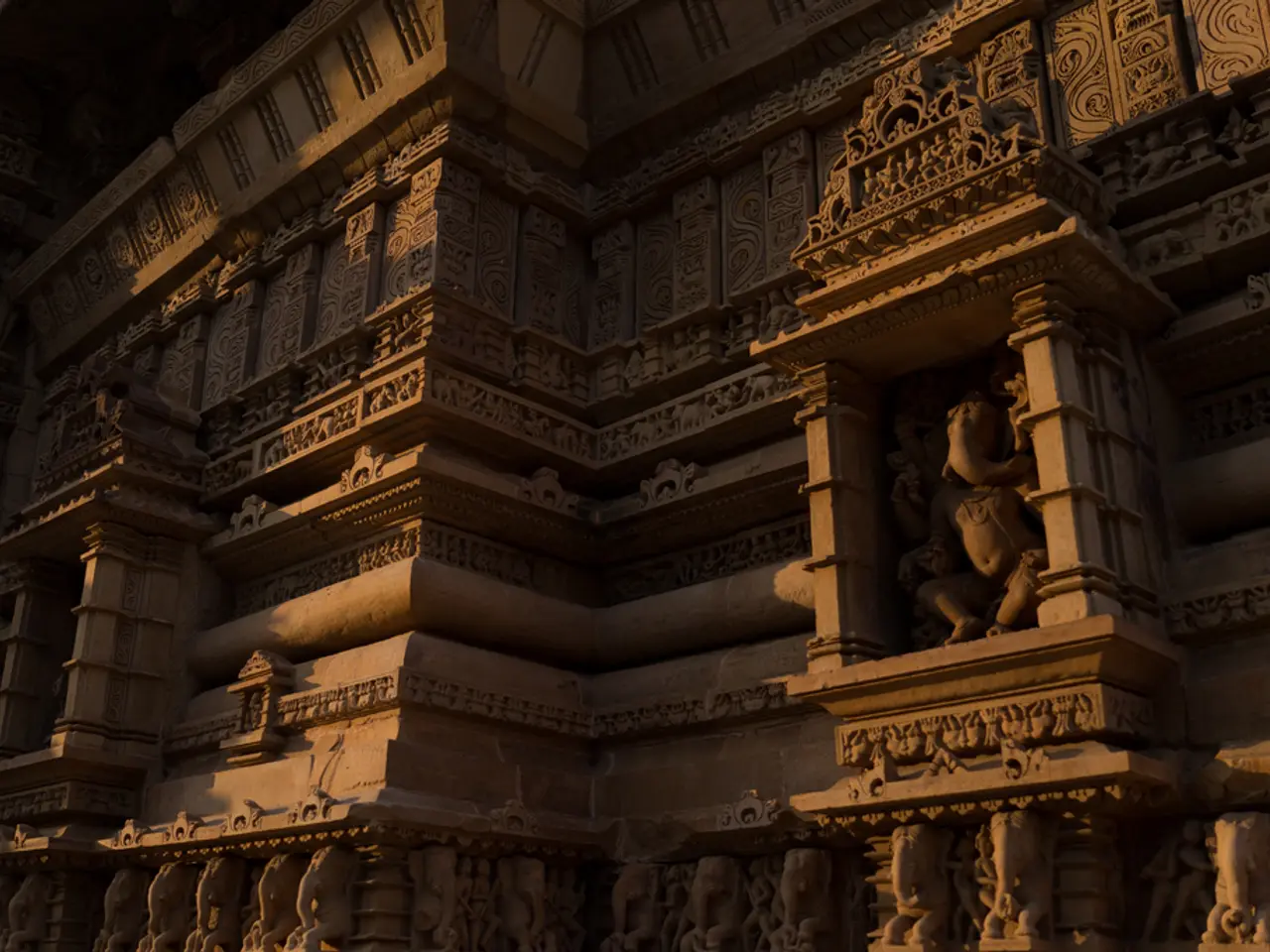Explore the art of Stucco plastering, appreciating its advantages for a sturdy and visually appealing wall coating, suitable for both indoor and outdoor spaces.
Stucco plastering, a specialized type of plaster, offers a unique blend of durability, aesthetic flexibility, and protection for both home exteriors and interiors. This ancient building material, which originated in Italy, has stood the test of time and remains a popular choice for homeowners today.
Durability and Protection
One of the key advantages of stucco plastering is its ability to provide a strong protective layer over various materials such as stone, cement-block, and brick. This makes it an ideal choice, especially for exterior applications in rainy or wet climates.
Aesthetic Flexibility
Stucco's versatility shines in its ability to be textured into many finishes by varying sand size, mix consistency, and application techniques. This allows for highly customizable surface looks, offering a wide range of colour and relief options for expressive facades.
Vapor Permeability (in some types)
Certain stucco types allow vapor transmission, which helps walls "breathe" and manage moisture, ensuring a healthier living environment.
Water Shedding
Cement-based stucco sheds water well, though it may require sealing for maximal moisture resistance. Some stucco formulations create hydrophobic, self-cleaning facades needing less maintenance.
Availability and Skilled Labor
Cement stucco components are widely available, and experienced applicators are common in regions like North America.
Thermal Insulation (with additives or EIFS)
Stucco applications combined with exterior insulation finishing systems (EIFS) can boost energy efficiency, providing 20-40% energy savings and better insulation performance.
However, stucco plastering also has its drawbacks.
Cost and Installation Complexity
Stucco is generally more expensive in materials and labor compared to alternatives like drywall, requiring skilled tradespeople and longer application times.
Cracking and Repair Issues
Cement stucco is rigid and prone to cracking, especially near doors and windows or where the building settles. Cracks are tough to repair and can allow moisture penetration, which can cause structural damage over time.
Moisture Sensitivity
Cement stucco may trap moisture if unsealed, leading to blistering paint and mold growth. It can also wick moisture into walls if applied over earthen materials, causing deterioration.
Environmental Impact
Cement stucco has a high embodied energy and carbon footprint due to cement production, which involves extensive mining and pollution. Cement contains chemical additives that can affect indoor air quality.
Lack of Flexibility
Compared to lime or natural plasters, cement stucco is less flexible, making it less able to handle building movement without damage.
Maintenance
Though some stucco types form self-cleaning surfaces, elastic paints used on stucco can degrade over time under sun and air exposure, requiring periodic maintenance.
Repair Difficulty
Repairs tend to be more complex and costly than with drywall; damaged plaster areas often demand extensive patching and matching finishes.
In summary, stucco plastering excels in durability, customizable aesthetics, and protection in exterior environments but involves higher cost, potential cracking, moisture risks, and environmental concerns, especially with traditional cement-based stucco. Choosing the right type (lime vs cement, or modern EIFS systems) and maintenance approach can help optimize performance for both interiors and exteriors.
A set of seven stainless steel trowels of varying sizes is ideal for finishing most types of plaster, including stucco. Plasterers often charge per square metre for stucco plastering, with textured plastering such as Stucco costing £50-£100 per square metre. Stucco is typically applied to the exterior of a building as a wall finish to mimic the appearance of stone.
Stucco plastering is a type of plaster made from Portland cement, sand, lime, and sometimes polymers or fibers. It is highly durable and weather-resistant, maintaining its appearance for extended periods on the exterior of buildings. A medium plastering sponge float can help achieve a smooth textured finish when working with stucco.
Stucco is commonly used on exterior walls, both residential and commercial. It is a low-maintenance, long-lasting decorative coating typically used on walls to create a unique and attractive finish. In warm climates, stucco is almost exclusively used on the outside of properties. Feature walls, ceilings, and archways can benefit from a stucco finish, especially if a more personalized look is desired.
Interior applications of stucco tend to be reserved for dramatic feature walls, fireplace surrounds, or high-end design installs. A plasterer will charge upwards of £250 per day for a small plastering job, and the cost can increase massively for larger jobs. Stucco can also be used on a variety of surfaces, including block, concrete, and brick.
Stucco can be made dead smooth, swirled, or even patterned with specialty tools. However, it's typically used externally as a wall finish. Despite its drawbacks, the benefits of stucco plastering, when used correctly, can provide homeowners with a beautiful, durable, and customizable exterior finish that stands the test of time.
- Tools like plastering sponges, floats, and stainless steel trowels of varying sizes are essential when working with stucco plastering.
- Stucco plastering is commonly used on exterior walls of homes and commercial buildings, providing a low-maintenance, long-lasting, decorative coating.
- In a home-and-garden or home-improvement project, stucco plastering can be used to build feature walls, ceilings, or accents like archways for an attractive, customizable finish.
- Stucco's costs vary, with textured applications such as Stucco costing £50-£100 per square metre and a plasterer charging upwards of £250 per day for smaller jobs.
- Stucco is typically applied to the exterior of buildings to mimic the appearance of stone, but it can also be used on a variety of surfaces, including block, concrete, and brick.
- The design possibilities for stucco plastering are endless, with tools available to create smooth, swirled, or even patterned finishes that complement a range of lifestyles and interior designs.
- When choosing a contractor for stucco plastering, consider their skills and experience to build and maintain the stucco within your home or garden project while ensuring it stays within your designated budget.




